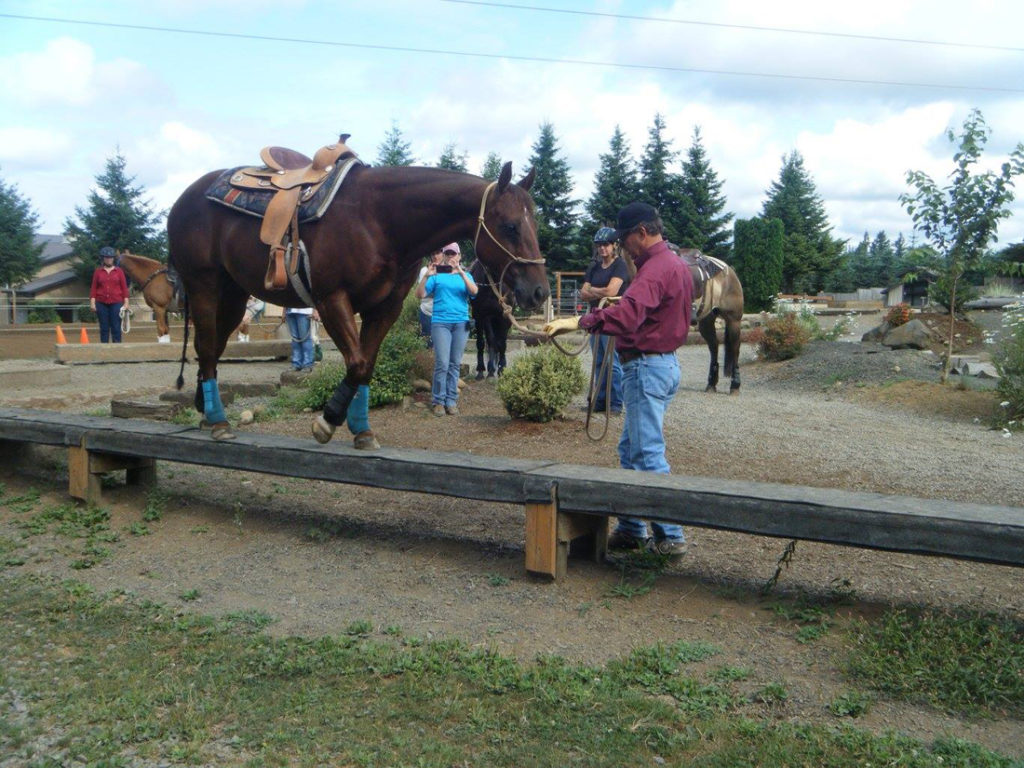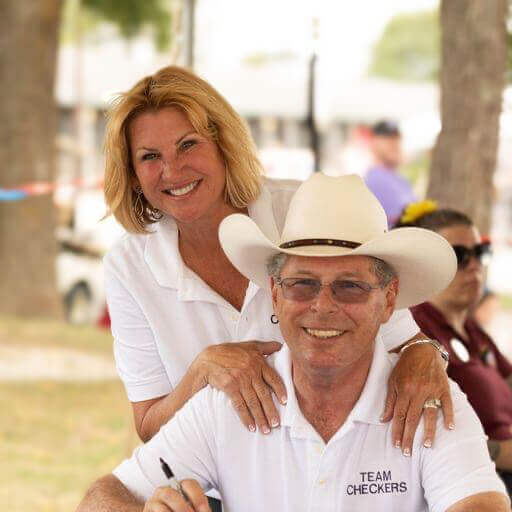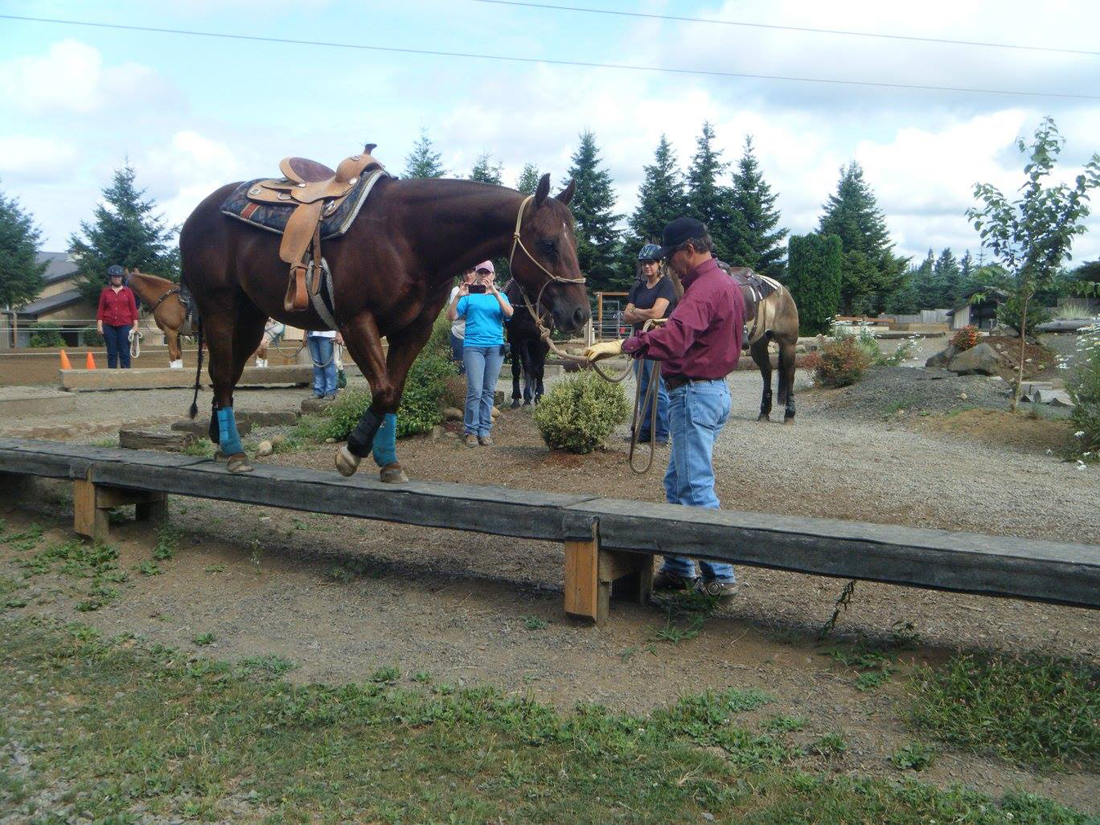Keep Your Obstacles Safe with Spring Maintenance
by Mark Bolender

Spring is here and the mountain trail obstacles are being put to use again. Now is the time to check all the obstacles for safety and needed repairs. When obstacles are used on a daily basis one does not notice how they are being worn down and fatigued. Spring is a good time to closely inspect them and make necessary repairs. I call it “preventive maintenance” so obstacles don’t fail while being used.
Let’s start with the first thing that is often overlooked: footing. The footing around an obstacle—which also may be part of it—is very critical and should be correct. For example, if you have a mud bog you still need a footing under the mud. The reason for this is a horse can go down with the rider or, worse, break a leg. There is nothing wrong with a mud bog, but it must be properly constructed with a base or it will quickly become an unsafe hazard.
I also put a base around the obstacles so horses don’t slip while trying to enter. I like a base built out of gravel and Eco GreenGrid. This interlocking plastic grid is extremely strong and easy to install. A pond obstacle is a good place for this grid/gravel combination as it is durable and safe when a horse is loping through the water. I have used this product on many courses throughout the globe with great success.
Carefully check turn-around boxes for with heavy use the tops become very thin and the horse will fall through. We just replaced the top of our large 60” inch turn-around box and I was surprised at how worn and thin the boards had become. To build the 60” turn around box you will need to have 5 2×10 support boards to adequately support a large horse. When you replace these boards make sure that you router the edges so they are not sharp.
Check bridges and balance beams at the place where the horse first steps on then. Often, horses paw the first part of the bridge and the deck will become worn and unsafe. Depending on the construction method, just a portion of the deck may need to be replaced. We have 4 balance beams which are all constructed in a different manner. Two of the balance beams have 16 inch wide 2×6 decks which allows me to replace a few boards as needed. One balance beam which is 18 inches wide has three 2×6 which are 14 feet long. I had to replace the whole deck when the ends of it become worn because of how it was constructed. This was more costly than replacing a few boards. My new design has a 1 ½ gravel top which is holding up well, thus reducing long term maintenance costs.
Step-downs/step-ups: Make sure that the gravel or dirt is packed and firm so a horse does not drop a leg down in a hole or, worse, puts a leg under a log or railroad tie. We need two loads of gravel each year just to fill in holes and add to spots that have packed down and settled. Of course, this will depend on how many horses use the course and under what conditions. Most courses now also have a very short, steep drop-down and these are great when they are dry and properly constructed. The steep step-downs must be mixed with 40 percent clay and 60 percent gravel and then packed in order to hold up. If they were not properly constructed they can be extremely slick and unsafe in the spring. Even if constructed properly, they can become worn and slick so grab the shovel and gravel and make the needed repairs.
For bridges, check underneath for rotting timbers, especially if they are over water in a moist setting. The timbers should be constructed of treated lumber, but I have found that even treated lumber rots. Other crossing obstacles to check include the cross buck. Horses will step over the cross logs in the same spot so the step get bigger as the dirt or gravel gets packed down. To fix this, simply take the logs out of the cross buck, add gravel to the depressions and then re-grade.
Making sure each obstacle is properly inspected and maintained will ensure many safe, enjoyable rides in the upcoming riding season.

Mark and Lee Bolender own and operate Bolender Horse Park in Washington State, which houses the finest Mountain Trail course in the world. They are the founders of the International Mountain Trail Challenge Association (IMTCA) and travel worldwide as clinicians and ambassadors of Mountain Trail. Bolender Horse Park offers riders of all skill levels and disciplines a fun and challenging trail riding adventure.
Mark has designed and built Mountain Trail courses in the USA, Canada, Australia, and Europe—with many more in development. Mark uses his artistic, landscaping, horse training, and construction skills to build these courses (NW Steel Design LLC www.nwsteeldesign.com).
Mark is the author of Bolender’s Guide to Mastering Mountain and Extreme Trail Riding. Visit www.bolenderhorsepark.com to learn more.






